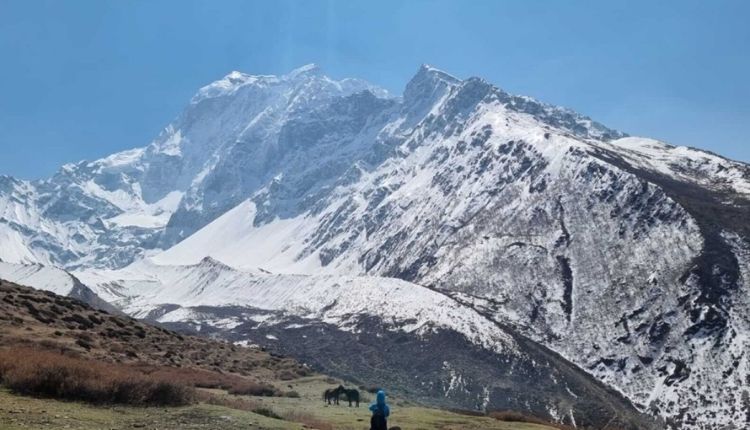
Treks
Altitude sickness is the hidden challenge that every mountain keeps for its adventurous spirits who dare to climb higher. The panorama of the Himalayas is ethereal, but the crisp, thin air at high altitudes can make even the strongest trekker feel nauseous and dizzy.
What starts as a mild headache, dizziness, or fatigue can quickly escalate into serious symptoms if ignored. Hence, this inevitable part of high altitude trekking can be easily avoided with the right preparation and better awareness.
What is Altitude Sickness?
So, what really is high altitude sickness? Well, let’s put it this way- at sea level, there is an abundance of oxygen present in the dense air. You can find almost 21% of oxygen in the air, so your body can take in an adequate amount of oxygen to function. You can feel that even strenuous activity rarely causes medical issues.
However, as you ascend to higher altitudes, the air gets thinner and atmospheric pressure decreases. In thin air, the percentage of oxygen also declines. At the summit of the highest peak in the world, Mount Everest, you can only find one-third of the oxygen in comparison with sea level.
Now, your body has to breathe in fewer oxygen molecules, and your organs get less oxygen supply. Thus, when your body cannot adapt to functioning on such a low oxygen supply, you get affected by the medical condition called altitude sickness. You can feel even less energy taking activities like breathing and walking feels difficult at high altitude.
You can fall under the trap of altitude sickness mostly above 2500 m. Moreover, most of the trekking in Nepal, such as Annapurna Base Camp Trek, Everest Base Camp Trek, etc, takes you above 4000 m, so the risk of mountain sickness can rise as you ascend to high elevation.
What are the Causes of Altitude Sickness?
First and foremost, when your body cannot properly adapt to the thin air of the higher altitude, it causes altitude sickness. Thus, you need to acclimatize properly to a certain altitude to avoid AMS. However, there are various factors that can delay your acclimatization process and contribute to the severity of AMS.
- Rapid Ascent
- Over exertion
- Dehydration
- Lack of acclimatization days
- Prior Medical conditions or individual health factors
What are the Types of High Altitude Sickness?
There are three stages of altitude sickness that trekkers can face while making their way high up in the mountains.
1. Acute Mountain Sickness (AMS)
This is the mildest form of altitude sickness that almost every trekker experiences while trekking in Nepal. This is the starting phase where your body slowly starts to show altitude sickness symptoms like headache, nausea, insomnia, and fatigue.
2. High Altitude Pulmonary Edema (HAPE)
This type of mountain sickness is fatal and life-threatening, characterized by symptoms like persistent cough, breathing difficulties, rapid heart rate, and shortness of breath. Generally, HAPE affects the lungs, causing fluid to build up.
3. High Altitude Cerebral Edema (HACE)
HACE is the most fatal and severe case of AMS that occurs due to swelling of the brain. One can go into a state of ataxia, hallucination, or blurred vision. And in the most extreme cases, it can lead to coma or death, too.
What to Do If You Experience Mountain Sickness Symptoms?
Do you know that the difference between a safe trek and a dangerous situation is very small? You may wonder how. Let’s be honest here. When you suffer mild AMS symptoms like headache, nausea, etc, you will ignore or overlook them, considering them to be harmless. However, if you continue to ignore them without treating those signs properly, it won’t take time to escalate into severe symptoms of HAPE or HACE.
Likewise, small mistakes such as skipping acclimatization days, overexertion, dehydration, etc, easily turn what seems like a normal trek into a dangerous situation. So, you should never ignore the early signs shown by your body. Upon knowing the early signs, you should immediately stop ascending and treat it properly right then and there. Once you feel okay, then only you can start ascending to further higher altitude. However, if your condition worsens, you should descend to a lower altitude and seek medical help.
Who is at Risk of Elevation Sickness?
High altitude sickness spares no one. Whether you are seasoned trekkers who have completed many treks or novice trekkers, just starting your trekking adventure, all are under the radar of AMS. However, a trekker with poor physical fitness or a trekker with medical conditions is more susceptible to altitude sickness.
If you are a rapid climber, an older trekker, or those with a history of altitude sickness, then you are most likely to be affected by elevation sickness. Altitude sickness can affect even the fittest individuals. So, you should take necessary preventive measures to avoid AMS regardless of what kind of trekker you are.
Tips For Altitude Sickness Prevention
1. Ascend Slowly
Walking for several hours on a flat surface is already exhausting. On top of that, you will be climbing higher altitudes on diverse terrain while intaking lower oxygen in the thin air. Ensure you don’t overexert yourself and try ascending gradually. You can follow the golden rule of climb high, sleep low. Likewise, you can take short breaks throughout the trek.
2. Drinking Plenty of Liquids
What you eat and drink can also play a vital role in preventing altitude sickness. You should stay hydrated throughout the trek. Due to increased breathing, sweating, and frequent urination at high altitude, your body can get easily dehydrated. So, you should drink at least 3-4 litres of water daily during the trek. Make sure you carry reusable water bottles, so that you can fill water from teahouses. You can also use hydration tablets and electrolytes to boost your hydration. However, drinking plenty of fluids doesn’t mean drinking hard drinks. Alcohol can worsen dehydration and slow down the acclimatization process.
3. Eat and Rest Well
Trekking in Nepal can last for several days. So, you must eat nutritious food that can provide you with energy to trek for several hours. Try eating Daal Bhaat Tarkari, a Nepalese staple food, and experience “Daal Bhaat Power 24 hour”. Apart from eating well, you should also take proper rest. After many hours of trekking, you will be exhausted at the end of the day. So, rest well to enjoy trekking the next day to the fullest.
4. Use Altitude Sickness Medication
After recognizing signs of AMS, the first thing you need to do after stopping ascending is to take altitude sickness medicine like acetazolamide (Diamox) and other drugs. These medicines can help you reduce the mild AMS symptoms.
5. Listen to Your Body
Your body knows you well. So, whenever you start feeling discomfort, your body starts to show early signs of altitude sickness. You don’t have to do much. Just make sure you recognize those signs and take immediate action.
6. Plan Rest Days
When you are planning your trekking itinerary, you should include acclimatization days. For instance, most of the trekkers include acclimation days at Manang during the Annapurna Circuit Trek before crossing Thorung La Pass. This is to give your body time to rest and adapt to a high altitude atmosphere. During a rest day, you can either relax at teahouses or go on a different sightseeing exploration.
Altitude sickness is one of the biggest concerns for trekkers, but it can be avoided with precaution and safety measures. You have to remember that every journey can bring challenges, but with the right mindset, preparation, and safety measures, you can easily enjoy breathtaking mountain views while minimizing health risks. Plan smart, stay informed, and trek responsibly to make your high-altitude adventure a memorable and safe one.






